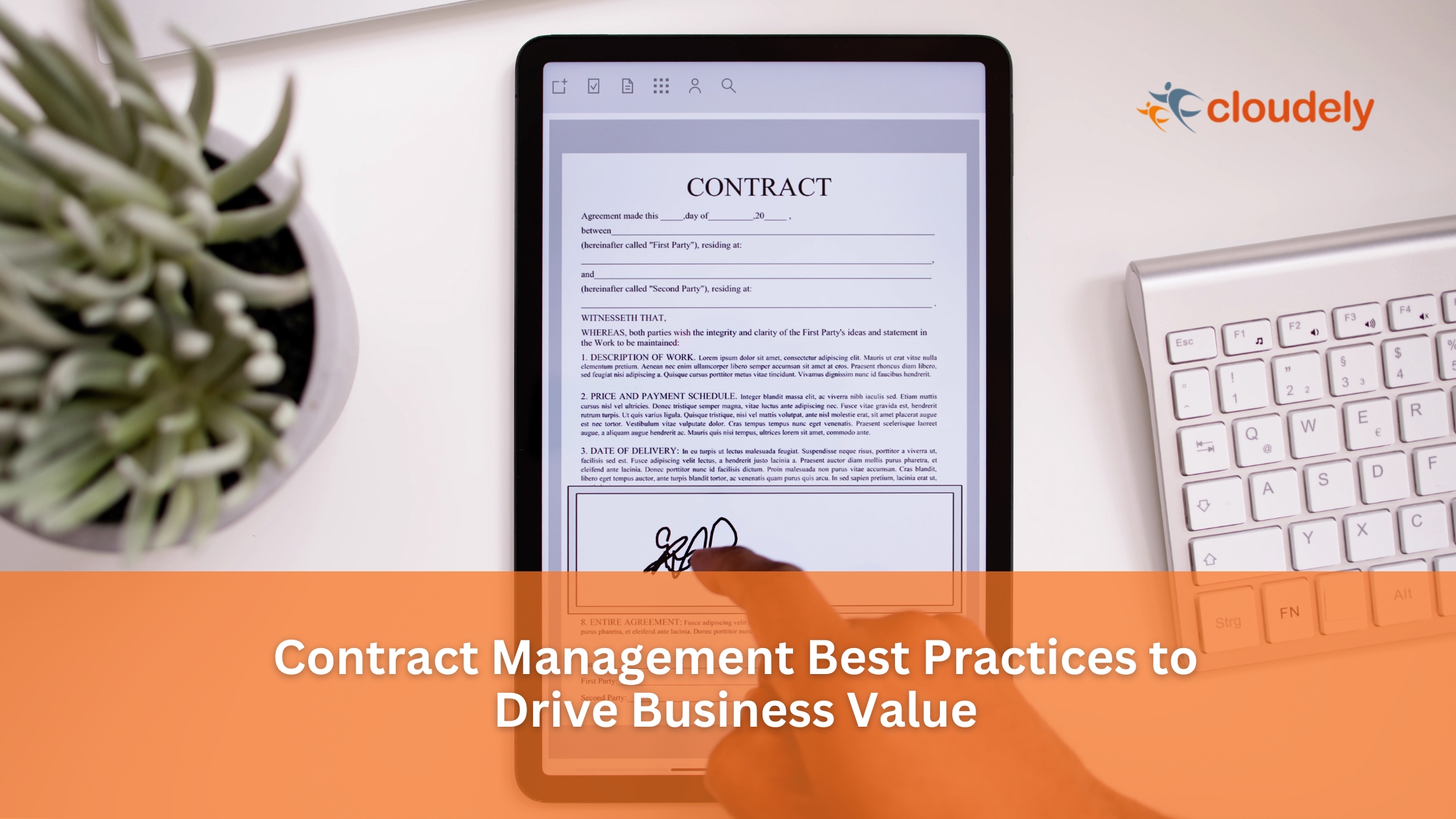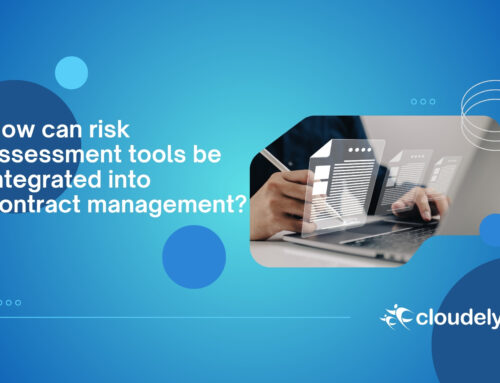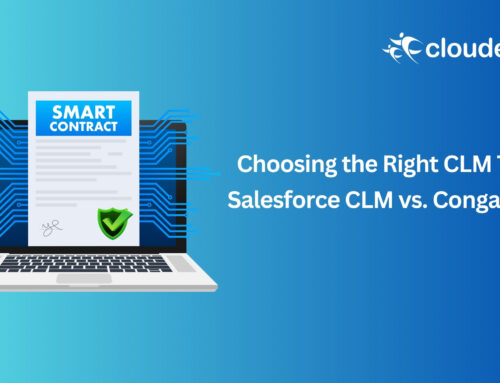You might have been thinking about how a few businesses appear to handle their contracts and agreements for a long time efficiently. They might be wringing more money from each than any other organization could imagine doing over time. The secret is implementing strategic best practices for contract management. In this article, we’ll explore the contract management best practices – the elite techniques that top performers use to maximize revenue, minimize risks, and strengthen partnerships through optimized contract handling.
Table of Contents
Standardization: The Foundation of Efficiency
Standardization is the cornerstone upon which all other best practices are built. With a consistent approach, it’s likely to benefit from centralized systems, analytics, or process improvements. There are a few key elements to focus on:
Templates
Rather than starting each contract from scratch, leverage templates tailored to different types of agreements. Templates should include standard boilerplate language around definitions, payment terms, confidentiality clauses, termination rules, etc.
Consistent Structure and Formatting
Whether using templates or customizing each contract, maintain structural and formatting consistency. Ensure sections, paragraphs, headers, and other design elements are uniform. Consistent appearance instills a professional image and readability while preventing misinterpretations due to variances.
Standard Contract Terms
Pre-define language for common contractual elements to be plugged into agreements with minimal editing. For example, craft set definitions, force majeure clauses, notice procedures, choice of law statements, and IP ownership language to apply seamlessly across contracts.
Central Repository and Access
Once standardized, utilize a centralized contract repository for storage, retrieval, editing, and collaboration. Examples of ideal repositories include a shared drive or contract management software. Centralization allows authorized parties to view and modify contracts from any location quickly and easily, avoiding delays from disjointed access methods.
Automation and Integration
With standardization and centralization sustaining an efficient foundation, automation, and integration become the accelerators that propel contract management into the digital fast lane. Consider these automated features:
Workflow Approval Processes
Leverage digital workflows rather than relying on emails and meetings to coordinate contract reviews and approvals. Automated workflows clearly define steps, assign tasks, trigger email reminders, and collect e-signatures – keeping complex processes on track from start to finish.
Document Generation
Produce contracts, amendments, and other documents quickly using automation. Populate standardized templates with customized information automatically pulled from databases or CRM records. Dynamic document assembly saves hours of manual data entry.
Rich Analytics
Contract life cycles involve vast amounts of structured and unstructured data. Enrich understanding by tapping into analytics to track metrics, identify strengths/weaknesses, and gain strategic insights. Dashboards deliver visibility into KPIs, including terms, compliance, negotiations, renewal projections, etc.
Integrations
Connect separate but interdependent systems through integrations for cohesive data and process flows. Examples include linking contracts with CRM and ERP systems for customer and project relationship visibility or integrating e-signature capabilities for quick, compliant sign-off.
Continuous Review and Improvement
The contract management journey is only partially complete, so excellence requires an ongoing commitment to assessing performance and evolving practices. Establish routines for regular refinement:
Lessons Learned Sessions
Periodically step back to discuss challenges, roadblocks, feedback, and “what went right/wrong” learnings from recent contract experiences. Document and address issues to strengthen ongoing efforts.
Audit and Compliance Checks
Scrutinize procedures and contracts to identify gaps in compliant execution, avoiding regulatory issues down the road. Refine as needed through policy or system updates.
Stakeholder Surveys
Gauge satisfaction levels and process pain points through surveys of colleagues, customers, suppliers, and others involved to find opportunities for enhancement.
Benchmark Comparisons
Research how competitors and exemplars elsewhere conduct similar operations. Adopt proven techniques that could sustain competitive advantages.
KPI Measurement
Analyze contract management key performance indicators like cycle times, negotiation outcomes, renewal rates, and more over periods. Notice patterns to reveal strengths or weaknesses warranting adjustments.
The Human Touch: Guiding Best Practices
While automated technology handles the behind-the-scenes heavy lifting and processes empower consistency at scale, human expertise can never be replaced when augmenting strategy and complex decision-making. Two vital roles deserve the spotlight:
Contract Managers
Certified contracting professionals fulfill a critical talent function beyond systems – applying experience, understanding, and soft skills. They nurture customer relationships by serving as trusted advisors, negotiate creatively within parameters, tackle ambiguity and exceptions, manage risk mitigation, drive compliance through training and education, and keep operations aligned with strategic company objectives.
Legal Counsel
An accomplished legal department plays offense and defense for the contract management function. Counsel develops standardized terms, monitors industry shifts necessitating adjustments, ensures processes stay current with applicable laws and regulations, and executes thorough reviews of sensitive or high-value contracts.
Enhancing Customer and Partner Relationships
Beyond the mechanics of optimization, contract management also impacts high-level business objectives. When treated as an opportunity instead of a rote task, contracting practices can cultivate stronger customer and supplier bonds critical for sustainable success:
Participation in Negotiations
Include procurement, sales, and critical stakeholders throughout discussions. Valuing their varied viewpoints creates more win-win, collaborative outcomes that serve mutual interests over the long haul.
Transparency of Performance
Proactively share activity and compliance updates with counterparts. Visibility into obligations reinforces the trust that both parties are invested in the relationship’s longevity.
Open Communication Channels
Keep communication lines accessible outside formal contract vehicles. Approachable teams facilitate easier issue resolutions before they escalate.
Automated Notifications
Notify applicable parties of contract events like expirations, amendments, or modifications through their preferred channels like email or portals. Attention to detail affirms commitment.
Surveys and Feedback Loops
Proactively survey customers and suppliers regarding experience. Applying learnings maintains satisfaction and highlights additional partnership value to be provided on both sides of agreements.
Transform your contract management. Contact us at hello@cloudely.com to learn how.






